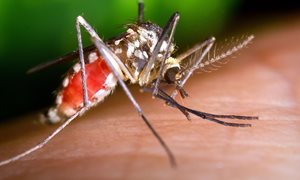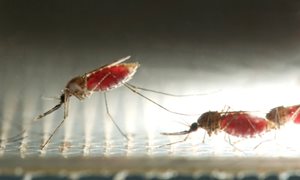
Scientists at the Radboudumc have gained knowledge about genetic variation in the DNA of mankind of that time thanks to DNA research from a 34-thousand-year-old skull found in a Romanian cave. This allows them to draw conclusions about our immune system, and how susceptible we are to infections and hereditary diseases.
The scientists decoded the complete genome from a skull taken from a woman who lived 34 thousand years ago. The skull was found in the Pestera Muierii cave (literally ‘The Cave of the Woman’) in present-day Romania, which lies along one of the main migration routes toward Europe, and along which more remains of the earliest immigrants have been found. The woman's genetic material is close to that of present-day Europeans. The results of the study were recently published in the scientific journal Current Biology.
Natural refrigerator
The researchers unraveled the thousands of years-old DNA, the body's molecular cookbook, by chemically cutting it into pieces. This gradually revealed the sequence of DNA, and thus the contents of the book. But to read the recipes hidden in the DNA, they first had to thoroughly dust it off. They did this with new, more efficient techniques, which allowed them to extract more genetic material from the ancient bones than had previously been possible.
But working with such old DNA is no easy task. 'You have to be very lucky and find bones that have remained protected all this time,' says Mihai Netea, professor of Experimental Medicine at the Radboudumc. 'In Africa, the continent where humanity originated, we also find bones, but there the high temperature has broken down all the DNA in them. In a cave there is a low and a constant temperature of about 10 degrees. A kind of natural refrigerator.'
Migration and infections
After these remains were found in a Romanian cave, Netea and colleagues set up a collaboration between local historians and biologists with geneticists from the Netherlands, Sweden and Spain. 'The Danube has traditionally been an important route on the way from Africa, through the Middle East, to Europe,' says Netea. 'Even now we see that the most recent migrant flow from Syria takes roughly the same two routes: along the Mediterranean coast, and through the Danube basin. Thanks to those ancient cave dwellers, we can learn a lot about our history.'
In particular, analysis of those ancient bones can provide insight into how the human body has evolved over the past 50 thousand years, and what characteristics they brought with them from their ancient habitats, such as resistance to infection. 'You have to imagine that these migrants of the time from Africa came from a completely different climate,' says Netea. 'They were not adapted to the local infection pressure in Europe.'
One of the conclusions that follows is that the response against bacterial infections was stronger 36 thousand years ago than it is today. 'We see that the immune response has changed,' says Netea. 'In the past, most people died from simple bacterial infections like pneumonia, whereas in this day and age, someone with a weaker immune system can survive just fine on a course of antibiotics.' With that knowledge, researchers can determine what the immune system of today needs to fight infections. 'The high mortality rate from infections back then led to much stronger selection for a strong immune response, and we see that reflected in the ancient DNA.'
Less inbreeding, so less disease
One of the other conclusions that the research by Netea and his colleagues yielded is the role of inbreeding in evolution. That role turns out to be different than thought. 'Our assumption was always that humans lived in small, isolated groups 50 to 30 thousand years ago,' says Netea. 'The result was inbreeding, and therefore poorer protection against disease.' But the analysis of the ancient Romanian skull showed that the genetic diversity in the DNA was just as great as that in the current population. 'The DNA looked very healthy,' he says.
'From that we can conclude that different populations had contact with each other,' says Netea. 'Inbreeding only occurred from the last ice age, when populations became isolated from each other', added Alexander Hoischen from department of human genetics, who was also involved in the research, By analyzing the genetic makeup of ancient bones in this way, researchers can determine the development of some hereditary diseases even into the present day. Consider, for example, retinitis pigmentosa, a disease of the retina that can lead to blindness at a young age due to a genetic mutation. 'Thanks to this old DNA, we can make new statements about this,' says Hoischen. 'We thought that a certain mutation of the disease gene would always lead to the disease. But thanks to this research, we now know that's probably not the case.'
About the publication in Current Biology
Genome of Peştera Muierii skull shows high diversity and low mutational load in pre-glacial Europe - Emma Svensson, Torsten Günther, Alexander Hoischen, Montserrat Hervella, Arielle R Munters, Mihai Ioana, Florin Ridiche, Hanna Edlund, Rosanne C van Deuren, Andrei Soficaru, Concepción de-la-Rua, Mihai G Netea, Mattias Jakobsson. DOI: 10.1016/j.cub.2021.04.045.
-
Want to know more about these subjects? Click on the buttons below for more news.
More information
Pauline Dekhuijzen

wetenschaps- en persvoorlichter
Related news items

Grants for research on magnesium deficiency and malaria Vidis for Felix Hol and Jeroen de Baaij
1 July 2022 Radboudumc researchers Jeroen de Baaij and Felix Hol both receive an NWO Vidi grant for their research, respectively on magnesium deficiency in type 2 diabetes and on malaria. go to page
Field research on malaria vaccine offers unexpected surprise
23 May 2022Field research on the effectiveness of a malaria vaccine, came up with unexpected results for an international group of researchers including Benjamin Mordmüller of Radboudumc. The vaccine evokes a broader response against malaria proteins than there are in the vaccine.
go to page
Rubicon grants awarded to three RIMLS researchers
19 April 2022Three researchers have received Rubicon funding from NWO/ZonMw. This will enable Elke Muntjewerff, Laura de Vries and Laurens van de Wiel to do research at a foreign research institute for the next two years.
go to page


